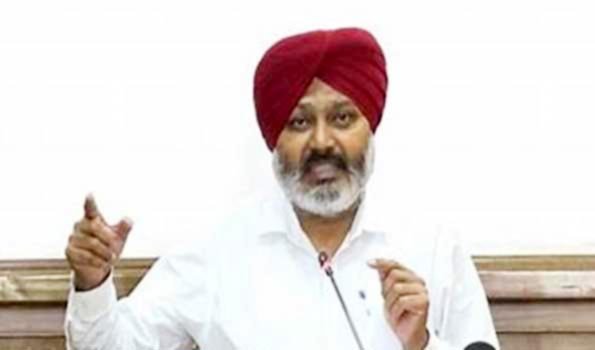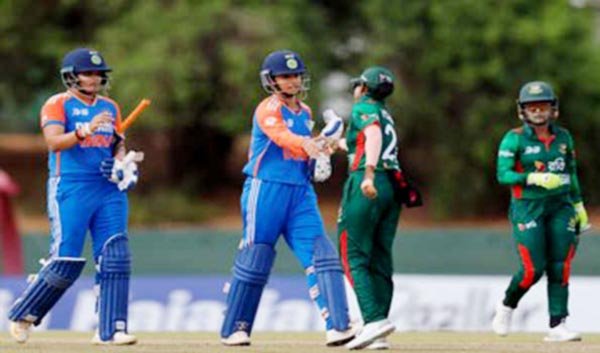Sriharikota, (AP), Sep 2 (UNI) The Indian space journey took yet another leap forward when the first solar exploratory mission Aditya-L1 spacecraft to study the Sun was successfully launched from the SHAR Range here on Saturday.
After a smooth 23 hour 40 minute countdown, ISRO’s reliable launch vehicle the 44.4 m tall PSLV-C57, in its 59th mission, carrying Aditya-L1 took off majestically from the Second Launch Pad at 1150 hrs from the SDSC Centre.
After a flight duration of little over an hour (63 minutes to be precise), PSLV successfully injected the 1,475 kg spacecraft in the intended Orbit, marking the commencement of its 125-day long journey to the Solar region to study the outer atmosphere of the Sun.
This is the second inter-planet exploratory mission for ISRO after the success of the Chandryaan-3 mission, whose Vikram Lander made a soft landing on the South pole of the Moon on August 23 and deployed the Pragyan Rover which has started conducting in situ experiments having traversed over 100 m on the moon’s surface and sending images and finding presence of various chemical substances including oxygen, aluminium, sulphur.
Soon after Aditya-L1, the first space based Indian mission to study the Sun, was placed in the Low Earth Orbit, ISRO said “the launch of Aditya-L1 by PSLV-C57 is accomplished successfully”.
The vehicle has placed the satellite precisely into its intended orbit from where it will be guided to be placed in a halo orbit around the Lagrange Point-1 (L1) (which is considered closest to the Sun) of the Sun-Earth system, which is about 1.5 million km from the Earth after performing orbit raising maneuvres from the ground stations.
Aditya-L1 will stay approximately 1.5 million km away from Earth, directed towards the Sun, which is about one per cent of the Earth-Sun distance, ISRO said.
The Sun is a giant sphere of gas and Aditya-L1 would study the outer atmosphere of the Sun.
India’s first solar observatory has begun its journey to the destination of Sun-Earth L1 point. After travelling 15 lakh km, spanning four months, Aditya-L1 spacecraft will enter the Sun’s sphere in the first week of January 2024.
ISRO said Aditya-L1 started generating the power and the solar panels were deployed.
The first Earth bound firing to raise the orbit is scheduled for tomorrow around 1145 Hrs.
The PSLV-C57/Aditya-L1 mission is one of the longest missions of of the workhorse launch vehicle of PSLV, though the longest of the PSLV missions was still the 2016 PSLV-C35 mission which was completed two hours, 15 minutes and 33 seconds after lift-off.
Aditya-L1 will stay in earth-bound orbits for 16 days, during which it will undergo five maneuvres to gain the necessary velocity for its journey.
Addressing scientists from the Mission Control Centre after the successful launch, ISRO Chairman S.Somanath said the spacecraft was injected in the “precise orbit”.
“Aditya L1 spacecraft has been injected in an elliptical orbit of 235 by 19,500 km which is intended, very precisely by the PSLV,” he said.
“From now on Aditya L1 will go on a long journey for 125 days,” towards the Sun, he said.
Hailing the launch, President Droupady Murmu, Prime Minister Narendera Modi, Union Minister Jitendra singh, Home Minister Amit shah, leader of various political parties, Chief Ministers and Governors of various states greeted the ISRO for successfully launching the Aditya-L1 spacecraft, the first mission to study the sun.
Ms Murmu posted on X “The launch of Aditya-L1, India’s first solar mission, is a landmark achievement that takes India’s indigenous space programme to a new trajectory. It will help us better understand space and celestial phenomena.”
“I congratulate the scientists and engineers at @isro for this exceptional feat. My best wishes for the success of the mission,” she said.
Mr Modi also congratulated the ISRO scientists and engineers for the successful launch of first Solar mission Aditya-L1 and said India continues its space journey after the success of third lunar mission Chandrayaan-3.
Mr Modi said India’s tireless scientific efforts will continue in order to develop better understanding of the Universe for the welfare of entire humanity.
In post on X, Mr Modi said “After the success of Chandrayaan-3, India continues its space journey.”
“Congratulations to our scientists and engineers at @isro for the successful launch of India’s first Solar Mission, Aditya -L1”, he said.
“Our tireless scientific efforts will continue in order to develop better understanding of the Universe for the welfare of entire humanity”, he added.
Dr. Jitendra Singh, who witnessed the launch from SHAR Range, hailed the ISRO scientists for the successful launch and termed it as a “sunshine moment for India”, one that the whole world waited on with “bated breath”.
Addressing the scientists, he said, “This is, indeed, a sunshine moment for India. Our scientists had been toiling night and day for years and years together for this moment.”
The successful launch of Aditya L1 also testifies the progress of space science and the whole-of-science and whole-of-nation approach that we have sought to adopt and imbibe in our work culture, he added.
ISRO said the Sun is a giant sphere of gas and Aditya-L1 would study the outer atmosphere of the Sun.
Aditya-L1 will neither land on the Sun nor approach the Sun any closer.
It said a satellite placed in the halo orbit around the L1 point has the major advantage of continuously viewing the Sun without any occultation /eclipses.
This will provide a greater advantage of observing the solar activities and its effect on space weather in real time.
“Initially the spacecraft was placed in a low earth orbit. Subsequently, the orbit will be made more elliptical and later the spacecraft will be launched towards the Lagrange point L1 by using on-board propulsion thrusters”, it said.
As the spacecraft travels towards L1, it will exit the earths’ gravitational Sphere of Influence (SOI). After exit from SOI, the cruise phase will start and subsequently the spacecraft will be injected into a large halo orbit around L1.
“The Aditya-L1 spacecraft–realised at the U R Rao Satellite Centre (URSC), Bengaluru–shall be placed in a halo orbit around the Lagrange point 1 (L1) of the Sun-Earth system, which is about 15 lakh km from the Earth”, ISRO said.











